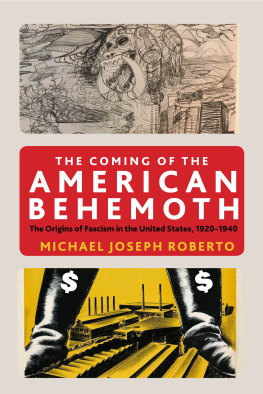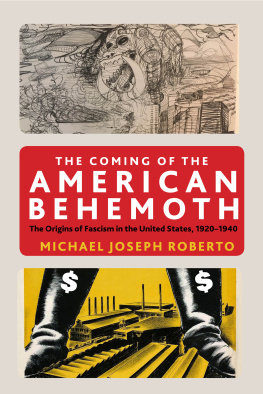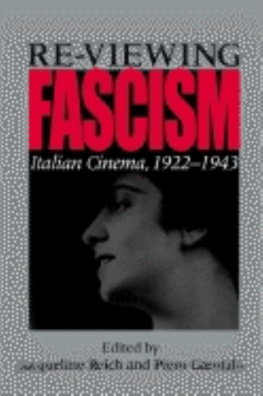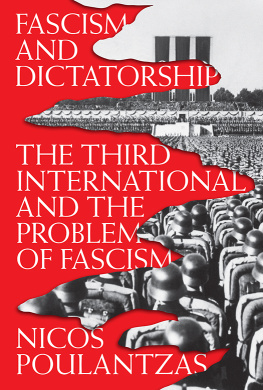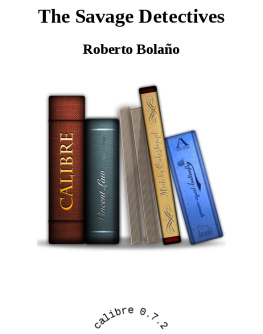
AUTHOR PHOTO: JOY PERKAL
MICHAEL JOSEPH ROBERTO retired in 2016 from the faculty of North Carolina Agricultural and Technical State University, the largest historically black educational institution in the United States, where he taught contemporary world history. A longtime political activist in Greensboro, NC, he has worked as a journalist and published essays in Monthly Review, Socialism and Democracy, and other scholarly journals. Roberto is also a percussionist who has performed with leading jazz and R&B musicians.
The Coming of the
American
Behemoth
The Origins of Fascism in
the United States, 1920 1940
MICHAEL JOSEPH ROBERTO
Copyright 2018 by Michael Joseph Roberto
All Rights Reserved
Library of Congress Cataloging-in-Publication Data
available from the publisher
ISBN paper: 978-1-58367-731-5
ISBN cloth: 978-1-58367-732-2
Typeset in Minion Pro and Brown
MONTHLY REVIEW PRESS, NEW YORK
monthlyreview.org
5 4 3 2 1
Contents
To the People of Greensboro, North Carolina
and to the late Sarah Regis Jeffus whose encouragement and material support made this work possible
Preface
SINCE THE ELECTION of Donald J. Trump to the presidency in November 2016, many people have told me how timely it is to be writing a book about fascism in the United States. Trumps presence in the White House has become a nightmare for millions of Americans who cannot understand how someone who thinks and acts like a Mussolini or a Hitler could have been elected to the nations highest office. Whenever I mentioned that my work was focused on the origins of American fascism in the 1920s and 1930s, many would say they wished I were writing about the current fascist threat. Yet when I provided examples from my research, they immediately recognized how familiar it all sounded in these times of Trump.
This is unsettling because it reveals how little most Americans know about fascism. What is most familiar to them is its infamous European legacy, specifically, that Mussolini took over Italy in the early 1920s and then a decade later in Germany Hitler catapulted to power. Absent is a vital piece of history recorded by American writerseither Marxists of some type or those influenced by Marxismwho in the 1930s and early 1940s believed that fascism was also possible in the United States but warned that it would not look the same as it did in Europe. Their astute observations revealed the peril of a distinct U.S. form of fascism, which was often proclaimed in the name of anti-fascism. For these observers, the real American fascists were those who wrapped themselves in the Stars and Stripes, pronounced themselves as guardians of the Constitution and democracy, and promoted the ideology of 100 percent Americanism. More important, much of it was peddled by reactionaries from the middling ranks of society but propagated by ruling-class elites who gained the most from it. Here was the masquerade these writers believed was the great peril of fascism in the United States. For reasons I hope will become evident in this book, the discourse that emerged during an earlier moment of crisisthe Great Depressionwas omitted or marginalized by later historians whose fundamental assumptions about the exceptional role played by the United States, the most democratic of all modern societies, made it immune from fascism.
My ultimate objective in this book is to unmask those who so cleverly and deceitfully clothed themselves in true Americanism so they might conceal their own nefarious ends. From the 1920s, a time of unprecedented capitalist modernization heralded by an incessant ballyhoo of prosperity, the people most responsible for creating the embryo of American fascism stood atop the pyramid of capitalist wealth. Here among the rich and privileged few, whose fortunes were determined by the continued and necessary expansion of capitalist production and exchange, we can detect the germ of American fascism, not only in the mechanisms of repression the rich established to safeguard their interests, but also in the deeper capitalist imperatives that drove them to turn the United States into the worlds banker and rising imperial hegemon.
To unveil this masquerade and grasp its more sophisticated guise in the present begins with the recovery of the works of these earlier writers. Their contributions are seminal to our understanding of the fascist threat today. Regardless of their differences, all pointed to the ruling capitalist class, or at least most of it, as the driving force of American fascism while dismissing the overt and often over-the-top small-fry fascisti as fringe groups of little or no significance. Nor did these contemporary writers put much stock in populist demagogues like Senator Huey Long of Louisiana and the Catholic radio priest Charles Coughlin as anything more than forerunners of a full-blown American fascism. Also missing in writings about the political landscape of the United States was a distinctive feature of European fascismthe mass movement. Instead, it was Big Business, Big Finance, Big Industry, Big Ownership, and all the other big entities associated with monopoly and finance capitalwith two critics calling Wall Street the fountainhead of American fascism. In simplest terms, what was uniquely fascist in their view was the desire of the ruling class to establish a capitalist dictatorship within the framework of liberal democracy.
By relying on these earlier works of the 1930s and early 1940s as core sources, I have attempted to capture their political verve in the hope that it will register in the present. In some chapters of the book, I give considerable space to their texts because the thinking and language is often more vivid and direct than the shades of gray we find in contemporary histories and commentaries. But the recovery of the content is my main concern, because it is crucial to our understanding of the current moment as citizens and students of history. For the public, it provides an alternative to mainstream historical accounts taught in our public schoolsas required by the sanitized pedagogy of capitalist schooling. To historians, it beckons further inquiry that will weigh the evidence presented here as the basis for future studies that can contribute to a fuller understanding of the history of American fascism. To both, however, it is my hope that what they discover will enable them to recognize how fascism today is really nothing new, but only its latest and most dangerous manifestation.
I have many people to thank for their unswerving support for my work. Among them is Mark Solomon, who was enthusiastic and encouraging from the moment I began talking about this project. His knowledge and counsel were indispensable. I am also indebted to my editor at Monthly Review Press, Michael Yates, who saw the merit of my ideas from the start and provided valuable criticisms and suggestions at pivotal moments of the project. Paul Breines, Al Brilliant, Joseph Louzonis, Larry Morse, and my son, Nate Roberto, offered invaluable insight and advice. Nate also provided an illustration for the book cover. I also thank Gregory Meyerson: the earliest work for this book was done in collaborative scholarship, publication and friendship. I acknowledge as well the long-standing intellectual and political support of Barbara Foley, Bertell Ollman, James Wood, and Chester Dunning. There are many others whose intelligence and enduring friendship were instrumental to keeping me together when the task seemed too daunting, especially Frank Fasano, Robin Roberto Horgan, Joy Perkal, Stuart Hunt, Randall Harris, Justin Harmon, Claire Morse, and Gayle Nantz, as well as my daughter, Ana Roberto. Still others in a long line of family and friends who supported me include Ernest Hooker, Galen Foresman, Sarah Beale, Jeff Jones, Travis Byrd, Susan and Spencer Andrews, Dean Finocchi, Cathy Fasano, Ed and Delores Freda, Peter Khoury, Kevin Tringale, Bev and Mike Conter, Josie Kite, Keith Tager, Kent Tager, Mike Bowen, Ellie Alinaghi, Roger Webster, David Knoche, and Anthony Bono.
Next page
